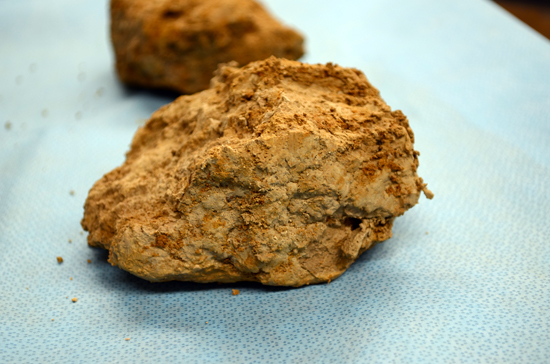UK research breaking down production barriers
UK research breaking down production barriers

Access to water is the biggest limiting factor to Kentucky soybean and corn yields. Researchers in the University of Kentucky College of Agriculture, Food and Environment are hoping they can help increase yields by breaking down a hard layer in the soil called the fragipan.
The fragipan is formed by a naturally occurring chemical process that creates a cement-like layer in the soil. About 50 million acres in the United States and 2.7 million acres in Kentucky have a fragipan layer in the soil. In Kentucky, this layer is found in silty loess soil types usually between 20 and 24 inches below the soil surface. While it can be found throughout the state, it particularly affects soils and crop production in the Purchase and Green River areas.
“In the summertime, it reduces the amount of water available to a crop, causing corn and soybeans to yield 20 to 25 percent less,” said Lloyd Murdock, UK soil scientist and the project’s principal investigator. “In wheat, the fragipan causes water to build up in the winter and early spring, so it affects root growth and final productivity too.”
With funding from the Kentucky Soybean Promotion Board, Kentucky Corn Growers Association and Kentucky Small Grain Growers Association, Murdock and fellow UK soil scientists Tasios Karathanasis, Chris Matocha and John Grove hope they can find a relatively accessible and inexpensive material that can break up the fragipan. They expect this product will be something producers can apply to the soil surface to penetrate the soil or a plant they can use in rotation with grain crops.
“Our objective is to remediate the pan and increase yields by at least 10 percent,” Murdock said. “Over a 10-year period at today’s grain prices, a 10 percent yield increase could translate into an additional $1,400 to $1,500 per acre for producers and have a $2 billion impact on Kentucky’s agricultural economy.”
Karathanasis and Matocha began conducting lab research in January to see if they can find a material that will break down fragipan samples taken from the soil at the UK Research and Education Center in Princeton. Materials they are currently studying include calcium carbonate, fly ash, municipal waste and poultry litter. These materials were mixed with water to emulate rainfall. In addition to visually observing the fragipan samples breaking down, the researchers will analyze the solution for inorganic and organic ions, pH level and released chemical binding agents. This will give them to clues to the chemical process that must occur for the fragipan to dissolve. Research will continue on these materials for the next several months, Karathanasis said.
As Karathanasis and Matocha identify potential materials, Murdock and Grove will conduct field studies on them. They have already begun studying the extent that different depths of the fragipan affect yields. They are also looking at certain promising materials and plants.
“There are some early indications that poultry litter, annual ryegrass, magnesium and sodium will disperse the pan,” Murdock said. “Increasing soil pH will also disperse the pan. Some organic compounds also seem to do so, but we don’t know what those are yet.”
The researchers hope to positively identify materials capable of breaking up the fragipan within five years.
Agricultural Economics Extension Research


